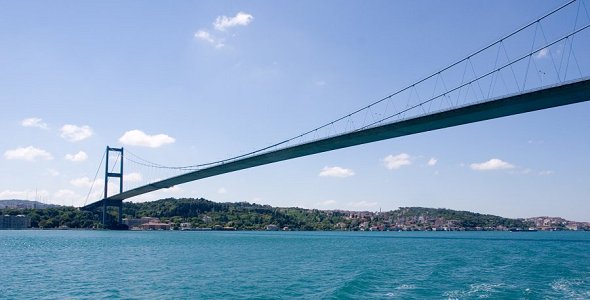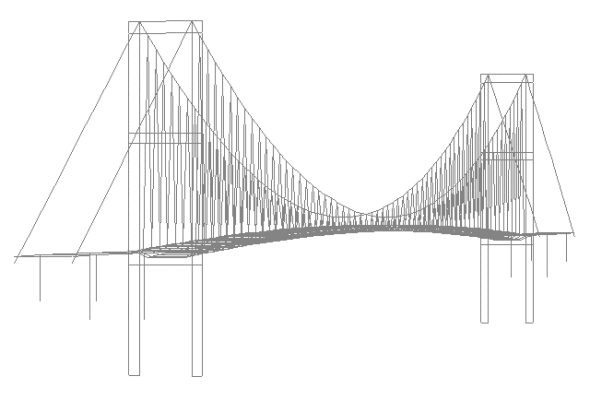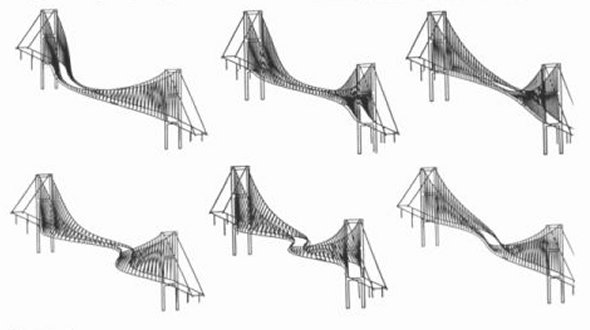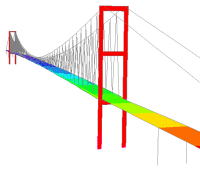Case Study
Ambient vibration investigation and modelling
of the First Bosphorus Suspension Bridge
- Experimental and analytical
studies of the dynamic response of the structure
- Main lateral, vertical and
torsional modes and natural frequencies of vibration obtained
- Good correlation between
experimental and analysis results

Under the supervision of
Turkey’s General Directorate of State Highways, a joint team from
Bogazici and Middle Eastern Universities in Turkey carried out
monitoring and analytical studies on the First Bosphorus Bridge
using LUSAS to predict the dynamic response of the bridge to ambient
excitations. Excellent correlation of results was obtained and as a
result of the study accelerometers and transducers were fitted
permanently to the bridge to measure its response to any seismic
activity that may occur in the future.
Overview
The Bosphorus Bridge (also known as the First Bosphorus Bridge)
spans the Bosphorus strait near Istanbul in Turkey and effectively
connects the European and Asian continents. The bridge is located between Ortaköy (on the European side) and Beylerbeyi (on the Asian side). It is a gravity anchored suspension bridge
with 165m high steel towers that support an aerodynamic hollow steel box
girder deck via inclined steel hangers. It originally carried six lanes
of traffic on a 33m wide deck and has a main span of 1074 metres. When constructed in 1973 it was
the fourth longest suspension bridge in the world.

Modelling
Using LUSAS, the team built a model
of the bridge and conducted an eigenvalue analysis to determine the
primary lateral, vertical and torsional mode
shapes and respective natural frequencies of vibration for the structure.
Thick beam and bar elements modelled the catenary cables and hangers
respectively. Thin shell elements, that take account of both
membrane and flexural deformations, were used to model the hollow
steel box girder deck.

The team also used accelerometers and seismometers
placed at key external and internal locations on the structure to
measure the bridge's response to wind and traffic
excitation. From this the team observed that a substantial amount of the
vibration energy in the bridge deck occured between 2 and 3 Hertz
with vertical acceleration peaks of up to 0.3g. The team suggested
that there may be reason to believe that these high energy
vibrations constitute one of causes of the low-cycle fatigue effects
that were observed on some of the welds on the deck. The team also
suggested that future investigations should concentrate on the source,
characteristics and remedies available to mitigate these high
amplitude local vibrations.
 Summary Summary
The excellent correlation that was
obtained from comparing experimental results with those predicted by
LUSAS gave the team every confidence in the accuracy of the
solution. As
a result of the study Turkey's General Directorate of State Highways
fitted permanent accelerometers and transducers to the bridge to
measure its response to any seismic activity that may occur in the
future.
References
- Beyen, K., Uckan, E., Erdik, M.,
“Ambient Vibration Investigation and Finite Element Modeling
of Bosporus Suspension Bridge,” Proceedings of the Second
International Conference on Earthquake Resistant Construction,
June 1994
Find out more
|
|
Software Information
|